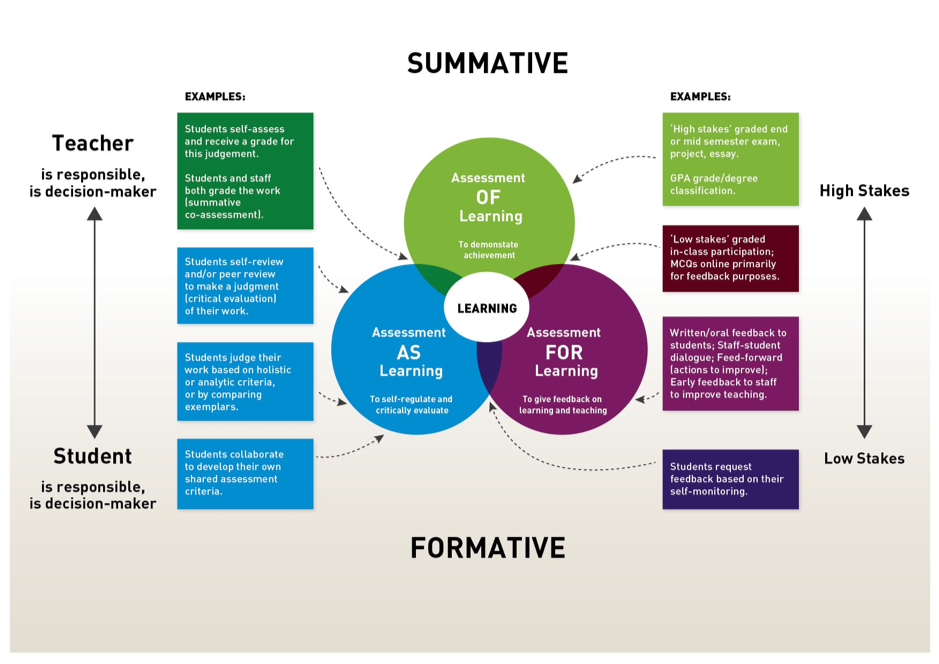Assessment Planning
These two weeks involved a lot of thinking about how my PBL project should be assessed and what exactly I wanted my students to know at its completion. As a teacher for all my life, I am really used to the process of developing a new unit; and I know that it’s not always easy to create something engaging, fun and at the same time educational. I always start with the outcome and then plan the activities and assessments that I need to achieve it. I enjoy developing learning games, bringing in details that will spark students’ engagement and motivation and creating collaborating projects. But there are so many other factor that someone needs to consider when developing a project like this!
- How can you assess content knowledge when your end product is a fair exhibit?
- How can you use formative assessments?
- How and when should you ask students for self- and peer- assessments?
- How can you assess teamwork and at the same time evaluate an individual’s contribution to a team project?
- How should you handle grading?
- And what about assessing 21st century skills and really preparing your students for the 21st century?
With all these in mind and many more, I created an assignment plan for this project. The hardest part was developing the rubrics to evaluate students’ work and especially the fair exhibit. I found really helpful Lewis’ article (2017) about rubrics and her step by step process on developing one. I completely agree with her that “Rubrics are evidence-based and widely accepted as an important aspect of good teaching” but I also believe that a second year’s rubric is always better than a first’s, since the second year you have the experience of the first.
Larmer’s “Gallery walk” was another idea I found to be really helpful from this week’s readings and I am going to employ in this project. “A gallery walk is a critique protocol in which students get feedback from their peers on how to improve their work”. Peer evaluation is an extremely powerful metacognitive tool. It involves students in the learning process and increases their ability for self-reflection and critical evaluation of their own learning. Peer evaluation also helps student reflect on their own work and improve it.
Margo Gottlieb (2016) in her book “Assessing English Language Learning: Bridges to Educational Equity” outlines an assessment process that benefits all learners, the “assessment as, for and of learning”. Assessment as learning focuses on students’ self-awareness and on practices that help them monitor their own growth and learning, such as self and peer assessments. Assessment for learning focuses on student-teacher interactions, such as feedback to students on their work in order to improve it. While the Assessment of learning determines if the students have achieved the course/class/project objectives and it’s an end, a final assessment. I feel that throughout this project, I provided several opportunities for my students to reflect and receive feedback from their teacher and peers in order to improve their work before submitting it. Also, I intend to revisit and evaluate all these assessments when the project concludes.
References
Lewis, B. (2017). Create Rubrics for Student Assessment – Step by Step. ThoughtCo.
Larmer, John. (2018). Using a Gallery Walk for Formative Assessment in PBL. PBLWORKS.
Gottlieb, M. H., & Hamayan, E. (2016). Assessing English Language Learners: Bridges to Educational Equity: Connecting Academic Language Proficiency to Student Achievement (2nd ed.). Thousand Oaks, CA: Corwin, a SAGE Company.



![10th week’s reflection [8/3 – 8/5]](https://www.gkonstantinou.com/wp-content/uploads/2022/07/pbl-500x383.png)
![9th Week’s Reflection [7/27 – 8/2]](https://www.gkonstantinou.com/wp-content/uploads/2022/07/1_Q9bfz0wD837_Irn20O-ERA-500x383.jpeg)
![8th Week’s Reflection [7/20 – 7/26]](https://www.gkonstantinou.com/wp-content/uploads/2022/07/Role-of-Teachers-in-PBL-500x383.jpg)
![6th & 7th Week’s Reflection [7/6 – 7/19]](https://www.gkonstantinou.com/wp-content/uploads/2022/07/project-500x383.jpg)
![3rd Week’s Reflection [6/12 – 6/21]](https://www.gkonstantinou.com/wp-content/uploads/2022/06/site-500x383.jpg)